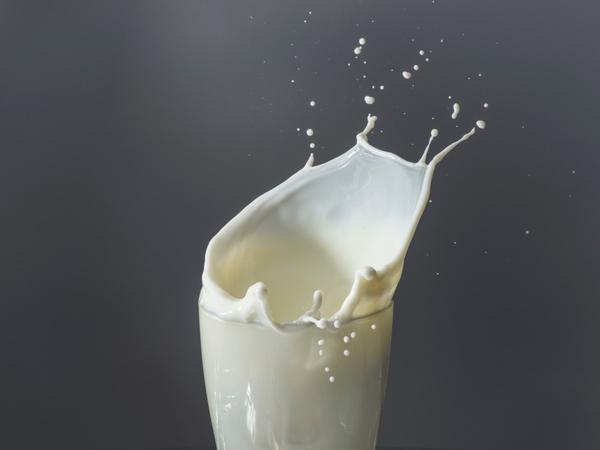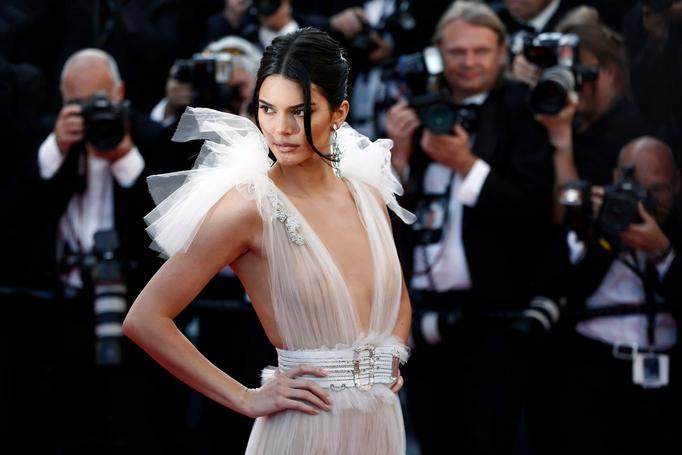
There is currently a film that ensures violent controversy.The French strip "Cuties" criticizes the hypersexualization of society, but in particular the young, growing girls and is stamped by conservative critics as child pornography.
To reflect a social picture, to criticize it, question it or to show intolerable grievances can often be a major challenge.Especially when you choose the art as a channel for it.Because you always have to expect that your own “artwork” could be misunderstood or misinterpreted.Explicit scenes often appear like a punch, and even though they reflect society, often belong to normality and therefore depict a certain reality.
This is also the case with "Cuties", in the French original "Mignonnes".The French Senegalese director Maïmouna Doucouré now even gets murder threats because of her coming-of-age film.Due to the representation of the young girls and because of too explicit scenes, both the director and the streaming platform Netflix, which has been making the film available in their media library since the beginning of September, have become the target for conservative critics.Some suspect a pedophile intention behind the drama and a sexual display of minors.And admittedly: Many scenes from the film have a bitter.But if you look at the strip carefully from start to finish and try to understand the relationships, then it should actually be certain: Doucouré practices social criticism.
The plot: between two worlds
The main protagonist is 11-year-old Amy, short for Aminata.In "Cuties" the viewer experiences some very stirring and transforming weeks of the girl.Amy is the daughter of an immigrant from Senegal.Together with her mother and her two younger siblings, she lives in a socially weak neighborhood in a social building on the edge of Paris.The family is very traditional and strictly believing.The mother often takes the girl to prayer circles, where Amy is noted that women have quiet, moral and modest, whereas the "exposed" on the French streets are evil.
Amy's mother tries to offer the family a pleasant life as possible, which is why the children are much alone and the 11-year-old often takes care of childcare.The father's existence is indicated, but it is never shown in the course of the film.He is in Senegal and prepares for the wedding with a second woman who shouldn't be much older than Amy.The upcoming wedding becomes an emotional ballast - both for mother and daughter.You can see them crying in this context.As soon as the father is married, he and his new second wife should also live in the household in Paris.A room that none of the children can enter was already nicely made up for them two.A monstrous, festive dress that she should wear for the wedding and that she is reminiscent of it every day hangs on Amy's closet.
A key figure in the film is also an old woman who is only called "aunt" by everyone.This forces Amy's mother in endless phone calls to tell family members how much she is happy about her husband's second wife.In addition, she terrorizes the eleven -year -old with patriarchal structures and religious dogmas how to be a woman.When Aminata gets her period for the first time, you find the aunt, the function of a woman is to marry, to be listening to the man and reproduce.
The transformation
Amy meets the hard countertrast when she sees four classmates dancing.She seems fascinated by the girls of the same age and decides to join them and their dance group.The main protagonist plays that one of the girls, Angelica, also the daughter of immigrants who lives in the same social building.She makes it into the girls clique and at this point Amy's transformation also begins.
While Amy is a shy, submissive girl at the beginning who leans on the demands and traditions of the family, she becomes more and more rebellious, female and lascivious in the company of the girls' group.This is also expressed on the outside of the 11-year-old.Inspired by the peers of the same age, she begins to wear short hot pants, abdominal-free tops, tight leather leggings and clearly too much make-up.

As a pack, the girls are not only extremely loud and eccentric, but also real Rowdies that, despite everything, do not manage to keep their childhood hidden.An example: When one of the girls finds a used condom on the playground, it blows with the mouth and plays with it.When the rest of the clique realizes what it actually is, they say that they have now had AIDS.Then scrub your mouth out with liquid soap and a brush.
Dancing with the girl clique appears like an escape to a self-determined world like an escape.The teenagers dress, move and stage themselves hypersexually.Their role models are significantly older girls from the Internet, the Kardashians and Tunsten dancers.Social media seems to be an indispensable learning instrument that helps you to perfect your oversexualized Lolita image, to wear it out and generate attention.They come to their genitals, suck on their fingers and use their supposed "charms" to get out of dangerous situations.In a scene, the girls twice for a man who catches them how they played in a laser day hall illegally.Another time, Aminata suggests her cousin to have sex with him when he doesn't tell anyone to stole his smartphone.
Criticism of social media
The criticism of social media also becomes clear: This is particularly expressed in a scene in which Amy puts a provocative video of the dancing girls clique online and harvested likes and hearts.Then she appears even more confidently, stages itself more sexually and struts through the school halls in scarce clothing while she enjoys the eyes of her classmates.The scene shows a disturbing picture that stands for where a large part of society now obtains its self -confidence - Instagram and Co.Another time she posts a photo of her genitals and is therefore violated by her friends.As a consequence, another takes up its place in the dance group.
Amy's joy in dancing becomes an obsession.At the end of the film, the 11-year-old comes up to two existential events between which she has to decide: the wedding of the father and a dance competition.When she meets the father's bride in the social housing for a few seconds, she runs away, hurried to the location, where the performance should take place and does not shy away from violence on the way to fight for her place in the group.She pushes the other girl into a river.
On stage, where the girls shock all parents and jurors with their appearance and “Buh-“ Collections, Aminata recognizes that the contrast world in which it fled for weeks does not mean freedom or self-determination.Just like in her strictly believing community, there is also a patriarchal set of rules that prescribes women as they have to be.Namely sexy, wicked and submissive.She flees from the stage and falls into her mother in the provocative, tight outfit.And this shows - contrary to all expectations - understanding, speaks well and says that she does not have to go to the father's wedding if she didn't want that.In the last scene there is a textile contrast one last time in which Amy is dressed like an ordinary 11-year-old, jumping rope.
First praise, then shitstorm and criticism
Conservative critics speak in connection with "cuties" of "children's pornographic machinations".The director is said to have shown the girls with the erotic poses and the camera work.A petition with over half a million signatures demands that the film be taken by the Netflix program.Others, on the other hand, want to boycott Netflix entirely.
Netflix is also significantly involved in this media outcry and the way in which the film was advertised.Instead of using the image of the girls jumping into the air, as on all film posters, Netflix decided to take a snapshot that shows the children when lasciviously posing.This caused bewilderness.Outraged users threw the streaming service - in this case justifiably - sexualization of minors.In the meantime, the content and the message of the film moved into the background.Netflix apologized publicly and pulled the advertising picture back.
The criticism of the film itself has not swelled since then and the director is still under fire.Since then it has sometimes been said that the FBI has to be switched on.Added to this is a conspiracy theorist of Qanon movement, right-wing conservative American media such as "Breitbart" and politicians like the Republican Senator Ted Cruz.
Either way.Director Maïmouna Doucouré hit a nerve with "Cuties" and addressed a topic that deserves much more attention.For this she now harvests murder threats and violent criticism.They throw their romanticization and glorification of child pornography and sexual exploitation of young girls.Unjustifiably.Doucouré shows countless grievances in its award -winning and largely autobiographical film "Cuties" - from a hypersexualized society to the dangers of social media and eating disorders to the oppression of women in modern and traditional social groups.And for that she was even excellent at the Sundance Film Festival, where the film celebrated its premiere.At 19.August 2020 he ran in French cinemas on.The reviews were largely positive.Only since the film is available on Netflix and is thus accessible to the masses that the allegations of children's pornography and exploitation have also been entering.
Art as a tool for social criticism
There are many channels and valves to practice social criticism.Music, for example.Or books.In articles this also works very well.Or in painting.Or you choose a cinematographic instrument like films.The latter approaches the action and the protagonists in the sewnest, which is why the resonance can be quite violent.How to stage something in front of the lens must be carefully considered because there are always real people behind the actors.In the room there is also the question: "May art everything?" Or in the case even more specific: Can you explicitly show grievances without cheapening it at the same time?Especially with a visual medium like a film?The British film magazine "Screen Daily", for example, found in "Cuties" that the sight of the prepublished girls should explicitly shock the mature audience and to confront them with an excessive sexual culture.
Of course, there is always a risk that people with pedophile tendencies will travel some of the scenes from the context and that they can be misused for their own "satisfaction".However, the "cuties" can happen as well as "a twin rarely comes alone" or "Hannah Montana".The fact is that you cannot look at other people in their heads and filter out their antisziacies.Anyone who associates what with which pictures and what really triggered pedophiles remains hidden.
Doucouré, who knows both sides - both religious dogmas and capitalist social structures - shows the fatal consequences of oppression on adolescents, socially disadvantaged and neglected girls.It does not moralize with a "right falsch cluster", but processes the experienced by visualizing it.In an interview with the "Time Magazine", she said: "I tried to show that our children should have time to be children, and we as adults should protect their innocence and keep them innocent as long as possible.“Anyone who tries to deny Doucouré these intentions either didn't see the film or just didn't understand it.
Also on food:







